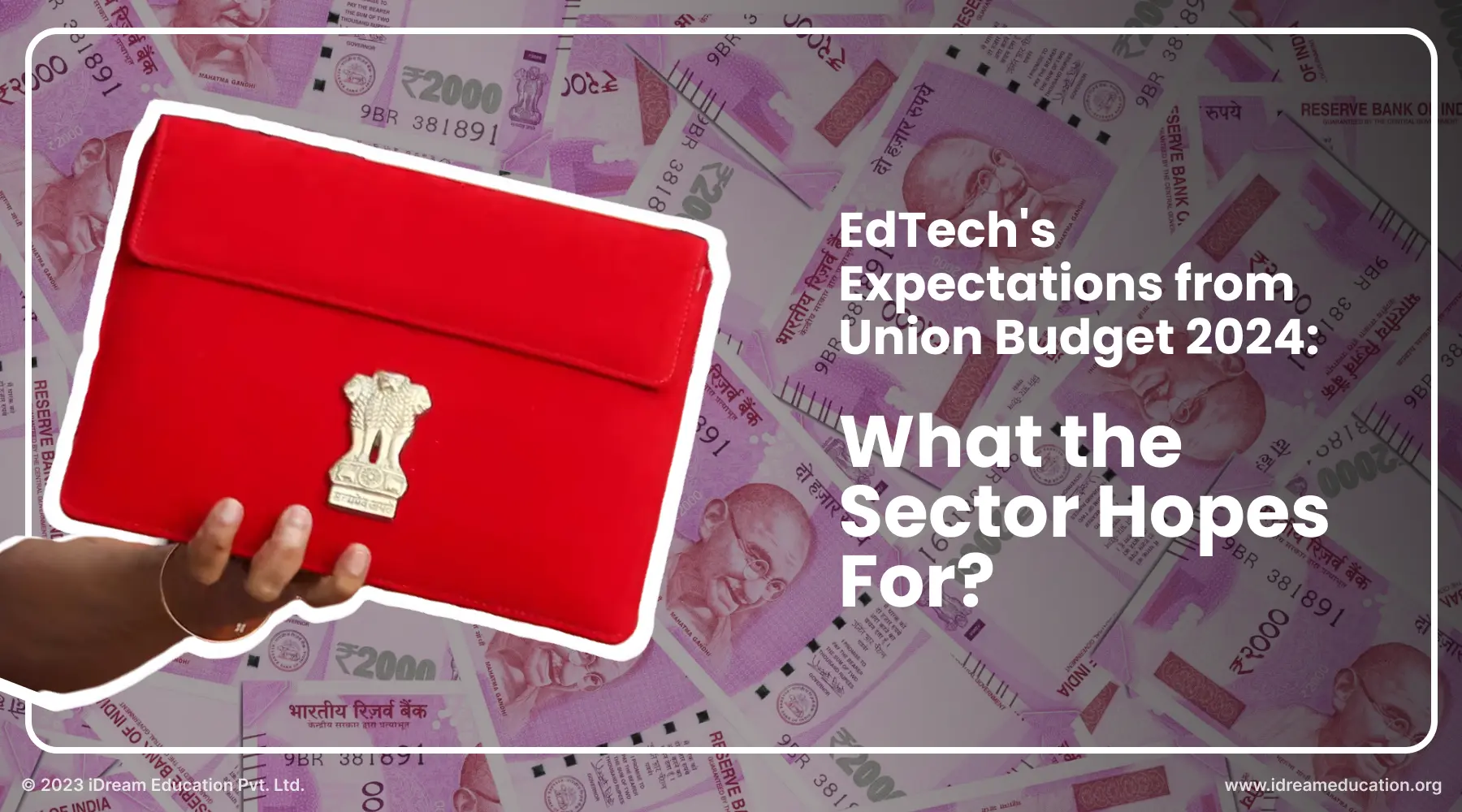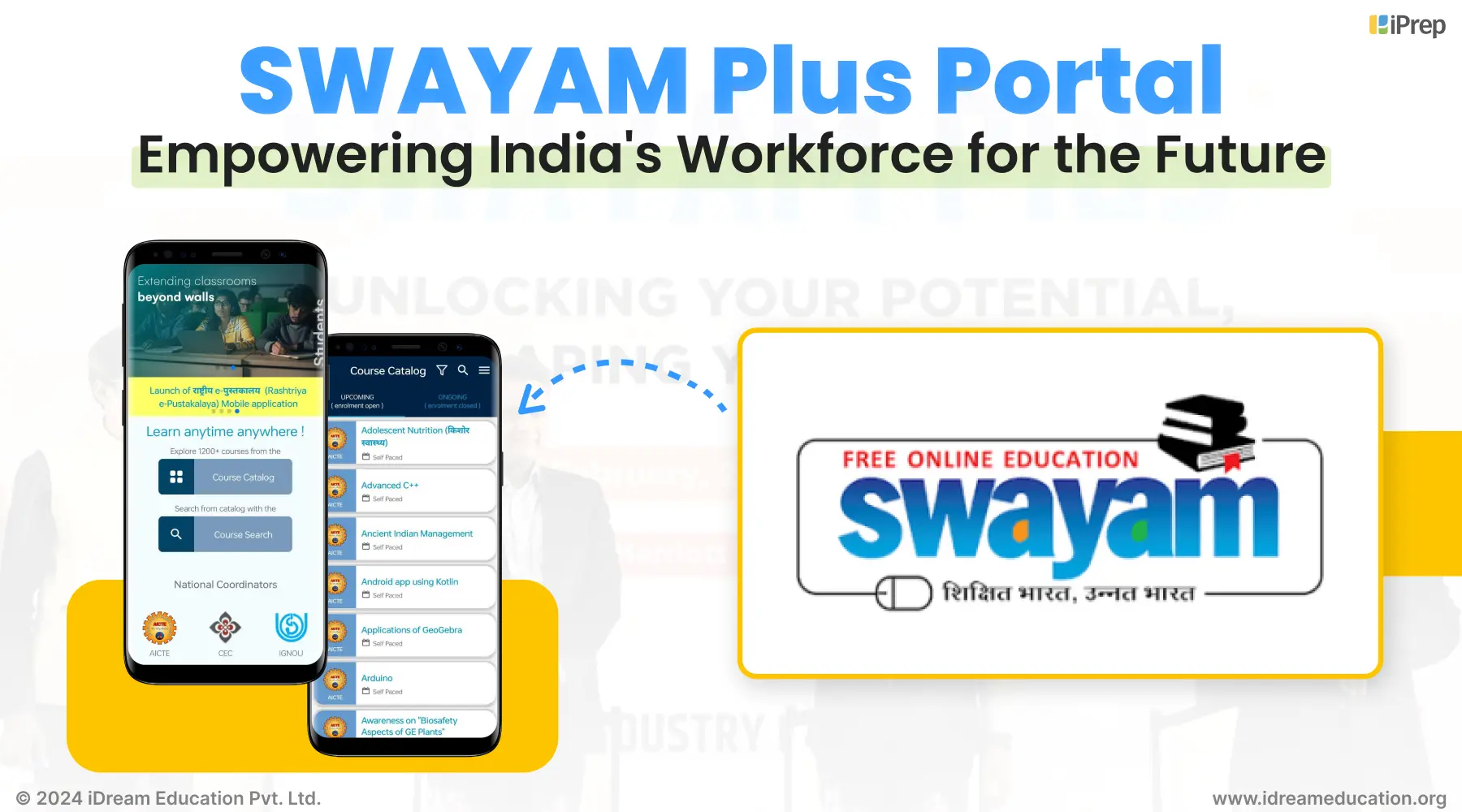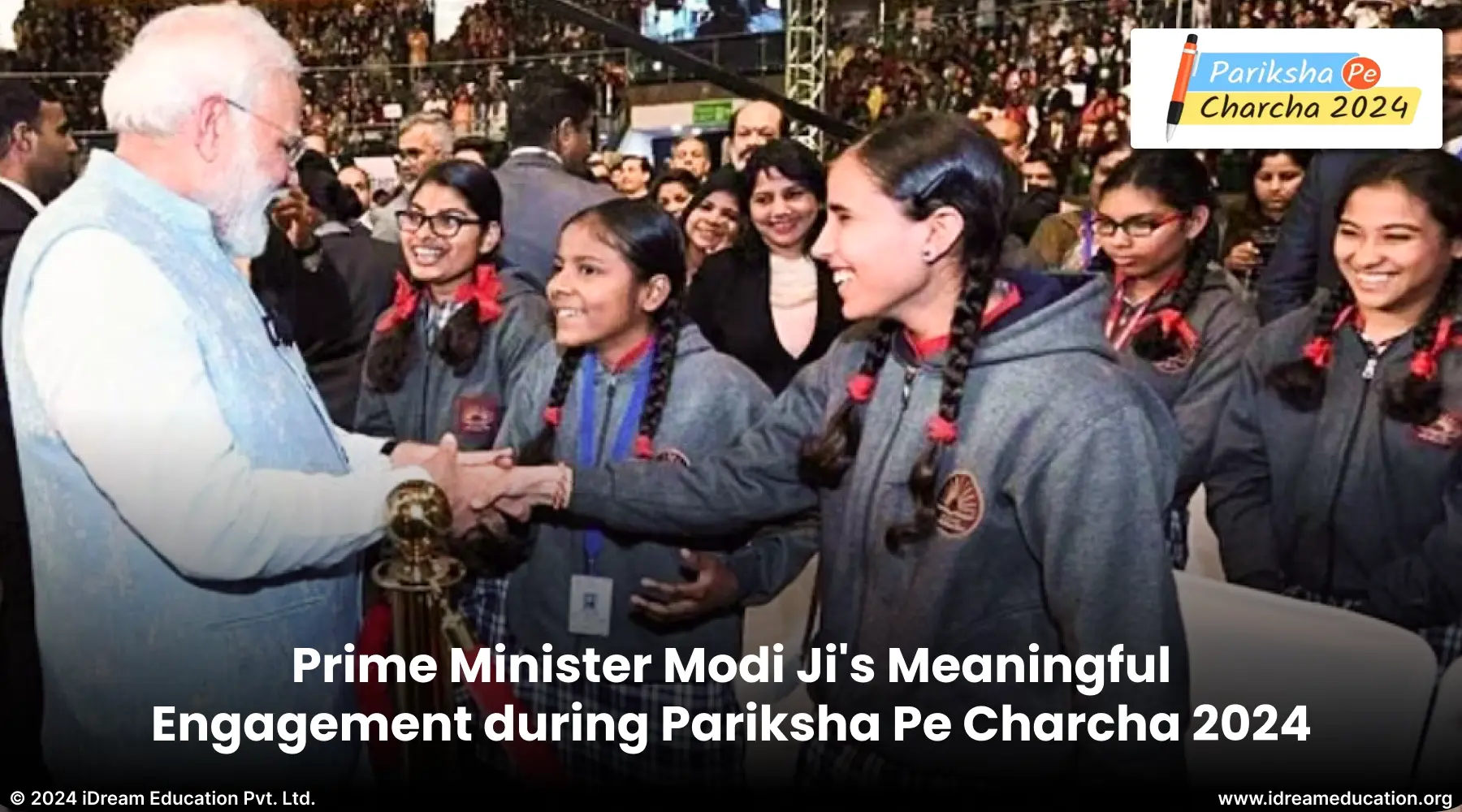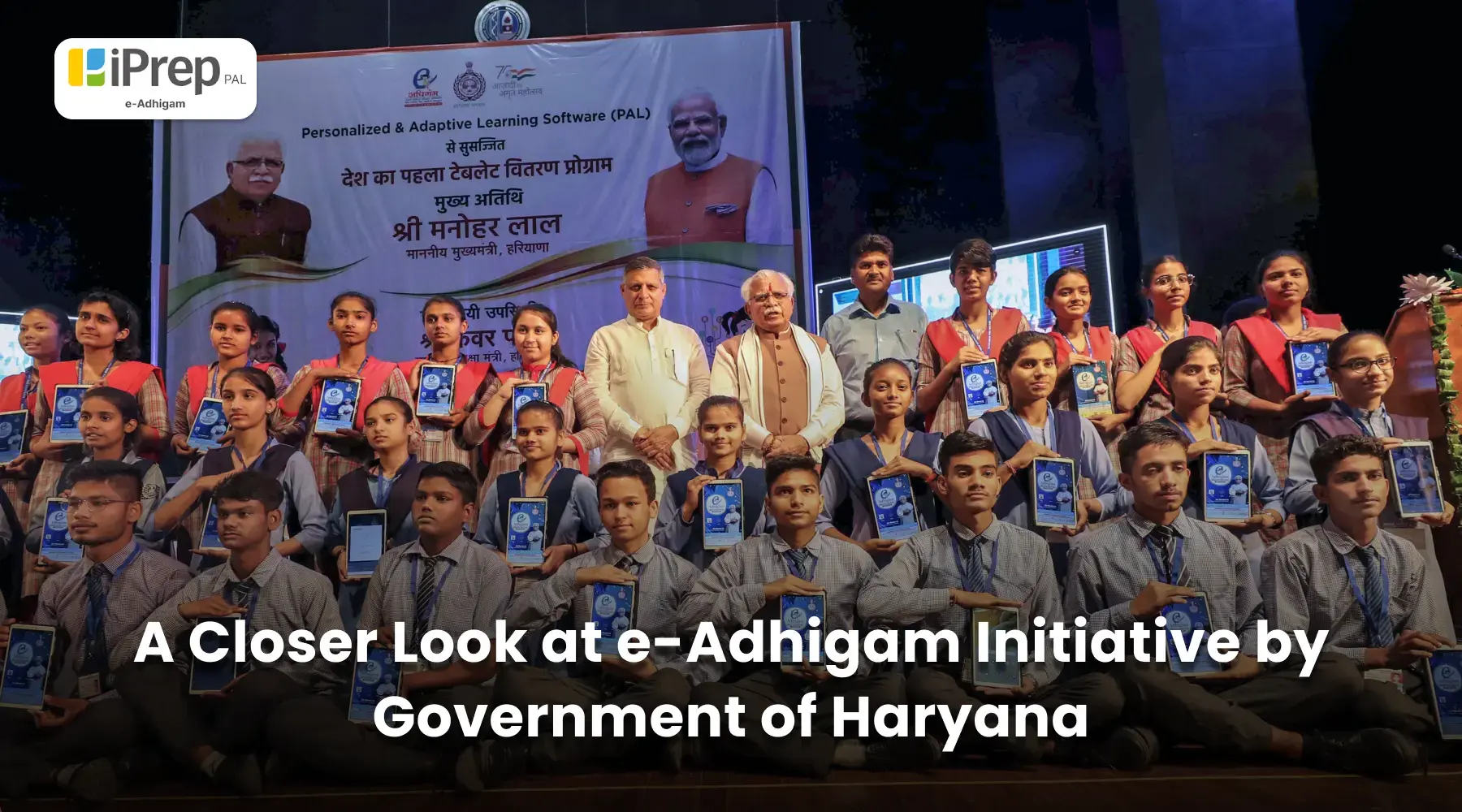A Closer Look at ASER 2023, the Annual Status of Education Report – ‘Beyond Basics’
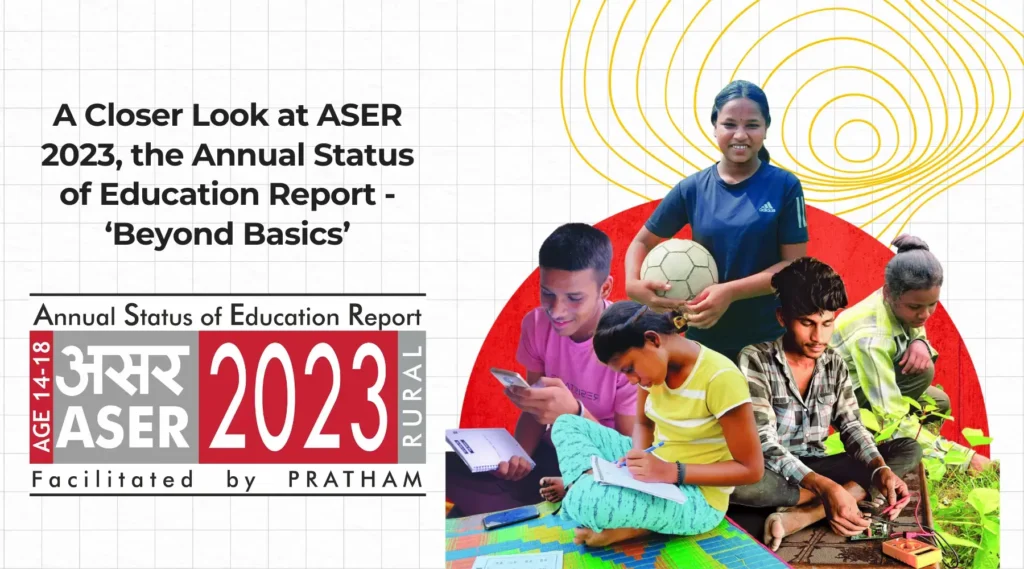
ASER 2023, titled ‘Beyond Basics,’ is a nation-wide citizen-led household survey. It provides insights into the activities and preparedness of youth aged 14 to 18 for leading productive lives as adults.
About the ASER 2023 Survey
- The survey focuses on four key aspects: educational and career pathways, the application of foundational skills in daily life, digital access, and future skills and aspirations.
- The ‘Beyond Basics’ survey for the year 2023 by ASER was carried out in 28 districts across 26 states. The survey was conducted with 34,745 youth aged 14-18. Each major state included a survey of one rural district, except for Uttar Pradesh and Madhya Pradesh. In UP and MP two rural districts were included.
- The survey gathered information on the current activities of the youth and their proficiency in both basic and applied tasks.
“Notably, the study placed particular emphasis on assessing the youth’s access to digital devices and their skills in performing digital tasks. Additionally, the survey delved into the aspirations of the youth related to their future”.
ASER had concentrated on the 14-18 age group in 2017 and came up with findings and recommendations highlighting the urgent need to focus on this age group. In 2023, the ASER 2023 revisited this demographic to further enhance understanding of youth in this age range, as well as changes since 2017.
The Imperative Need of Prioritizing the Youth Population
Six years since ASER 2017, with the COVID-19 pandemic, there has been significant changes in the lives of people across the world. In India, the prolonged closures of schools and colleges ranked among the lengthiest globally. This impacted millions of learners and led to learning loss among students nationwide. The pandemic led a widespread shift of education, employment, and services to remote and online platforms, emphasizing the necessity for digital access and proficiency.
In the midst of this change, the National Education Policy (NEP) was released in June 2020.
The National Education Policy (NEP) advocates for a three-tier pedagogical framework in Indian school education. This structure in policy defines a ‘secondary’ stage’ which covers the age group of 14-18 years and the importance of areas such as multidisciplinary education and life skills, for students in the 14-18 age group.
ASER 2023 ‘Beyond Basics’ explored four key domains
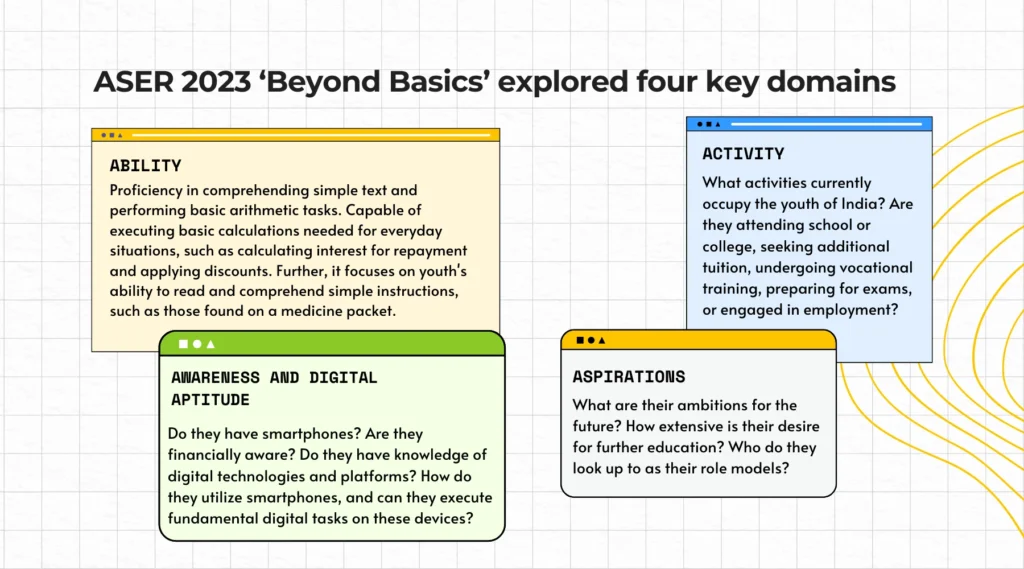
- Activity: What activities currently occupy the youth of India? Are they attending school or college, seeking additional tuition, undergoing vocational training, preparing for exams, or engaged in employment?
- Ability: Proficiency in comprehending simple text and performing basic arithmetic tasks. Capable of executing basic calculations needed for everyday situations, such as calculating interest for repayment and applying discounts. Further, it focuses on youth’s ability to read and comprehend simple instructions, such as those found on a medicine packet.
- Awareness and digital aptitude: Do they have smartphones? Are they financially aware? Do they have knowledge of digital technologies and platforms? How do they utilize smartphones, and can they execute fundamental digital tasks on these devices?
- Aspirations: What are their ambitions for the future? How extensive is their desire for further education and their careers? Who do they look up to as their role models?
Key Findings: ASER 2023
Activity (Pg. No. 34)
- Enrollment: 86.8% of individuals aged 14 to 18 are currently enrolled in an educational institution. While there are minor gender differences in enrollment, age plays a significant role in these patterns. Notably, older youth exhibit a higher likelihood of not being enrolled. The percentage of those not enrolled is 3.9% for 14-year-olds and increased to 32.6% for 18-year-olds.
- Enrolled Streams: The majority of youth within this age range are enrolled in the Arts/Humanities stream. In the eleventh grade or beyond, over half of them opted for the Arts/Humanities stream (55.7%), with STEM following at 31.7% and Commerce at 9.4%. In the STEM stream, the enrollment rate is lower for females (28.1%) compared to males (36.3%).
- Vocational Training: Just 5.6% of the surveyed young individuals are engaged in vocational training or related courses. Among college-level youth, the highest proportion (16.2%) is engaged in vocational training. The majority of young people are enrolled in short-duration courses, typically lasting for six months or less.
- Employment: A greater proportion of males (40.3%) engage in non-household work for at least 15 days in the previous month compared to females (28%). In both genders, the majority of young individuals involved in activities other than household work are typically employed on family farms.
Ability (Pg. No. 35, 36, 37)
- Foundational reading Ability: Approximately 25% of individuals in this age bracket 14-18 are still unable to fluently read a text at the Standard II level in their regional language. Just over half of them, or 57.3%, can read sentences in English. Among those capable of reading English sentences, 73.5%, can comprehend their meanings. When considering enrollment categories, females outperform males in reading a Standard II level text in their regional language, with a rate of 76% compared to 70.9%. Conversely, males excel over their female counterparts in arithmetic and English reading.
- Foundational Arithmetic Ability: In general, nearly half of the youth population demonstrates proficiency in common calculations, such as time measurement, weight addition, and application of the unitary method. Across all routine mathematical tasks, males outperform females. Those youths who have fundamental arithmetic skills are more likely to excel in everyday calculations.
- Comprehending Ability: Among young individuals capable of reading a text at a Standard I level or higher, almost two-thirds can read at least three out of four questions from the medicine packet. A higher percentage of males (69.2%) demonstrate this proficiency compared to females (61.7%). Performance is stronger for those who are enrolled in Standard XI-XII or undergraduate education compared to those in Standard X or below. Additionally, less than half of unenrolled youth exhibit the ability to answer at least three out of four questions.
- Calculating Ability: Among young individuals proficient in subtraction or higher-level mathematical calculations, more than 60% can successfully complete budgeting tasks, approximately 37% can apply discounts, and only around 10% can accurately calculate repayments. It is noteworthy that males consistently outperform females in various financial calculation tasks.
Awareness and Digital Aptitude (Pg. No. 38)
- Access to digital devices: Nearly 90% of young individuals have a smartphone in their households and are proficient in its usage. Among smartphone users, males (43.7%) are more than twice as likely to own a smartphone compared to females (19.8%). In contrast, the presence of a computer or laptop in households is significantly lower, with only 9% having one at home. Youths with access to a computer or laptop at home are considerably more likely to be proficient in its use (85%) compared to those without access (33.9%). Furthermore, females exhibit a lower likelihood of being proficient in the use of smartphones or computers in comparison to their males.
- Knowledge of digital devices: Around 50% of surveyed males have an email ID, while the figure is just under 30% for females. Nearly all young individuals (90.5%) acknowledge using social media during the reference week, with a slightly higher percentage among males (93.4%) compared to females (87.8%). Among the youth who utilized social media, only approximately half are aware of the online safety settings outlined in the survey. Notably, males exhibit a higher awareness of these settings compared to females.
- Usage of Digital devices: Two-thirds of youth having smartphones used it for learning during the reference week of the survey. These activities include watching online study-related videos, resolving doubts, and exchanging notes. Additionally, a quarter of non-enrolled youth also reported participating in educational endeavors using their smartphones during the same period.
- Fundamental digital tasks: Nearly 80% of young individuals used their smartphones for entertainment activities, such as watching movies or listening to music, during the reference week of the survey.
Aspiration (Pg. No. 60, 62, 64, 66)
- Education Goals: A greater percentage of boys, compared to girls, indicated a lack of interest in pursuing further studies after completing Standard XII.
- Role models and career goals: The career aspirations of young individuals exhibit significant gender distinctions. In the surveyed group of boys, the top two choices were the army (13.8%) and police (13.6%), while other job categories lagged behind. On the other hand, among girls and young women, the most prevalent selections were teacher (16%) and doctor (14.8%), with police (12.5%). Among the surveyed young individuals, one in four were unable to identify a specific career aspiration.
- Career Aspiration: The most common responses fell into the “Don’t know” category. Approximately one in five youths (21%), with minimal variation between genders, struggled to specify any particular type of work or job they aspire for.
Considering the findings of ASER 2023, Madhav Chavan, the co-founder and CEO of Pratham Foundation, emphasized the need for a shift in mindset, stating, “While technology can be helpful, it is crucial for our perspectives to evolve.”
Technology is useful but our mindsets have to change
Madhav Chavan
Key Takeaways
- Smartphone ownership in rural households has increased from 36% in 2018 to 74% in 2022
- Two decades ago it was believed that computers and the internet would revolutionize education. A decade later mobile technology led to the belief that education anytime anywhere is possible. From one laptop per child we started thinking mobile devices will replace books. Now we are about to reach a situation of having a mobile phone in every home.
- 89% of youth have stated that they have a smart phone at home, 92% stated they know how to use a smartphone. According to self-declared information in ASER 2023, almost half the population has used mobile phones for their studies, significant but much less than those who use Youtube on smartphones.
- Agriculture employs over 50% of India’s workforce, only 0.7% of the surveyed youth are enrolled in agriculture courses beyond Std X
- Half of the students start working part-time after completing Std X
Opportunities outlined in ASER 2023:
- The adoption of technology and usage of smartphones for learning are going to be crucial. A shift is required for the right, more effective and safer use of these devices by the youth.
- Universal Elementary school enrolment has been achieved in India. We are on our way to achieve universal secondary and higher secondary enrolment.
- While the NEP talks about bringing flexibility in entering and re-entering the education process. The need really is for the underprivileged youth to study while working to earn a living. Open schooling and digital education is a powerful combination that is growing.
- The education system should also enable goals of youth outside academics. The idea of life goals not being defined by academics is becoming popular. Contrary to our education system that has grown to train students to aim at one purpose in life i.e. to do well in academics and get jobs, times are changing. While this will continue to be a goal for youth, the notion of life goals being outside academics and jobs are getting wider prominence.
From Right to Education (RTE) 2009 to NEP 2020: Progress towards equipping youth for the future
Schooling
- Key Takeaway ASER 2023: An increase in enrollment levels for the secondary stage, with simultaneous increase in the demand for students to perform exceptionally well in high-stakes examinations.
- Opportunity: The National Education Policy (NEP) 2020 outlines the ambitious objective of achieving 100% secondary school enrollment. It proposes achieving this goal through continuous monitoring of students’ enrollment, attendance, and learning levels. To achieve this, we need provisions for appropriate opportunities for students to reenter school or bridge learning gaps. The examination pressure should be reduced by reevaluating the timing and structure of assessments. NEP 2020 puts forth various recommendations for examination reform and increased flexibility. Furthermore, policy emphasis on youth enrollment as it gives the education system the additional time and space to prepare them for life.
Foundational Literacy and Numeracy
- Key Takeaway ASER 2023: There is a pressing need for targeted initiatives to address Foundational Literacy and Numeracy (FLN) among a substantial proportion of youth aged 14-18. These efforts are essential not only for academic improvement but also for meeting daily life activities. ASER 2023 data suggests that around 25% of youth in the 14-18 age bracket may require support in building FLN skills.
- Opportunity: The NEP 2020 acknowledges the necessity for addressing the learning gap among individuals who have fallen behind. Consequently, we may implement initiatives to actively support students in grades VIII and above who are lagging behind.
Digital access and digital possibilities for the future
- Key Takeaway ASER 2023 : Youth have smartphones and are adept at using them. Connectivity is generally accessible, even in remote villages.
- Opportunity: As the nation’s digital infrastructure is swiftly taking shape, it is imperative for schools to incorporate digital skills into their curriculum. This will enable the effective orientation, training, and motivation of youth to develop enhanced digital capabilities on a broad scale, facilitating the proficient use of digital resources for various purposes. The National Education Policy (NEP) 2020 advocates integrating technology to enhance educational processes and outcomes. This involves fostering digital literacy and promoting initiatives grounded in technology to achieve these goals.
Work
- Key Takeaway ASER 2023: Many young individuals engage in employment while they are in school or college. Contributing to family farms or businesses may be essential for families’ economic reasons. But it’s worth noting that many non-family jobs might not take into account the need for flexibility among working students.
- Opportunity: The NEP 2020 endeavors to significantly envision vocational education. For this policy proposes gradual integration of vocational education programs into mainstream education across all educational institutions.
Way Forward
NEP 2020 has reimagined the ‘foundational stage’ (age 3 to 8). The Government’s NIPUN Bharat Mission has begun to rework structure and practices. Similar to the pathway linking NIPUN to early grades, we need active efforts to translate middle school and secondary school reform ideas into action, along with close tracking.
The ASER 2023 findings also underscore the importance of empowering our youth with the requisite knowledge, skills, and opportunities for personal and community growth. It is evident that aligning educational strategies with the National Education Policy (NEP) 2020 is a key step towards achieving this goal. The integration of technology by providing EdTech solutions, serves as a progressive stride in this direction.
iDream Education has designed its solutions completely in alignment with NEP 2020, to help youth address learning gaps, develop understanding of regional languages, and impart vocational skills to contribute to a holistic education that not only leads academic progress but also improves practical capabilities.
As we aspire for a future where every youth can take charge of their own progress, and of their communities. The need of collaborative efforts grounded in NEP 2020 and supported by technology become indispensable for realizing this vision. For secondary school age students, NEP’s ‘learning to work’ perspective is largely dependent on a complete re-imagination of how vocational education is offered to students in the future. One of the results of universal elementary education is an increase in expectations of students and family members to get white collar jobs, while this creates cutthroat competition for getting into colleges, it also closes young minds to the possibility of exploring other livelihood pathways for progress. The responsibility of creating a new highway for transition from school to work lies not only on the education system but also with industry. Developing such paths that will enable young people to find productive livelihoods so that they have fruitful lives is one of the major challenges India faces today.


